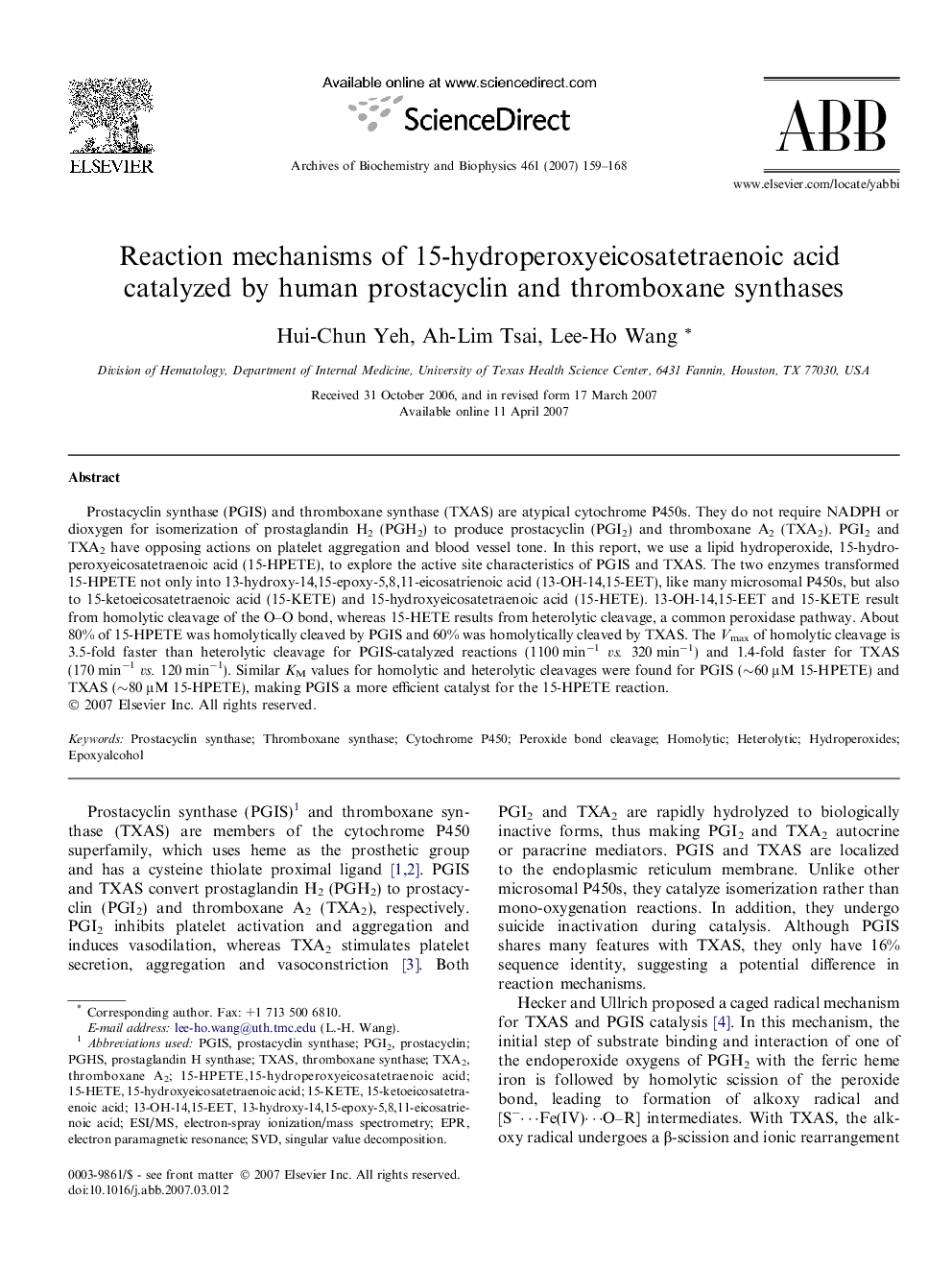| Article ID | Journal | Published Year | Pages | File Type |
|---|---|---|---|---|
| 1927170 | Archives of Biochemistry and Biophysics | 2007 | 10 Pages |
Abstract
Prostacyclin synthase (PGIS) and thromboxane synthase (TXAS) are atypical cytochrome P450s. They do not require NADPH or dioxygen for isomerization of prostaglandin H2 (PGH2) to produce prostacyclin (PGI2) and thromboxane A2 (TXA2). PGI2 and TXA2 have opposing actions on platelet aggregation and blood vessel tone. In this report, we use a lipid hydroperoxide, 15-hydroperoxyeicosatetraenoic acid (15-HPETE), to explore the active site characteristics of PGIS and TXAS. The two enzymes transformed 15-HPETE not only into 13-hydroxy-14,15-epoxy-5,8,11-eicosatrienoic acid (13-OH-14,15-EET), like many microsomal P450s, but also to 15-ketoeicosatetraenoic acid (15-KETE) and 15-hydroxyeicosatetraenoic acid (15-HETE). 13-OH-14,15-EET and 15-KETE result from homolytic cleavage of the O-O bond, whereas 15-HETE results from heterolytic cleavage, a common peroxidase pathway. About 80% of 15-HPETE was homolytically cleaved by PGIS and 60% was homolytically cleaved by TXAS. The Vmax of homolytic cleavage is 3.5-fold faster than heterolytic cleavage for PGIS-catalyzed reactions (1100 minâ1vs. 320 minâ1) and 1.4-fold faster for TXAS (170 minâ1vs. 120 minâ1). Similar KM values for homolytic and heterolytic cleavages were found for PGIS (â¼60 μM 15-HPETE) and TXAS (â¼80 μM 15-HPETE), making PGIS a more efficient catalyst for the 15-HPETE reaction.
Related Topics
Life Sciences
Biochemistry, Genetics and Molecular Biology
Biochemistry
Authors
Hui-Chun Yeh, Ah-Lim Tsai, Lee-Ho Wang,
